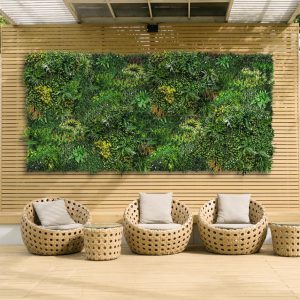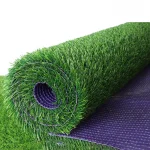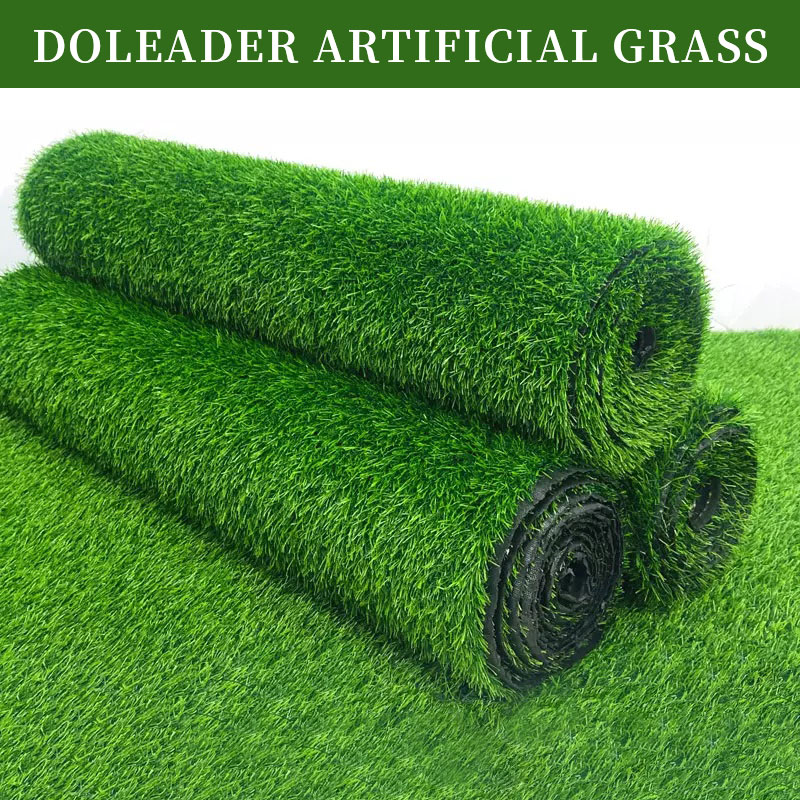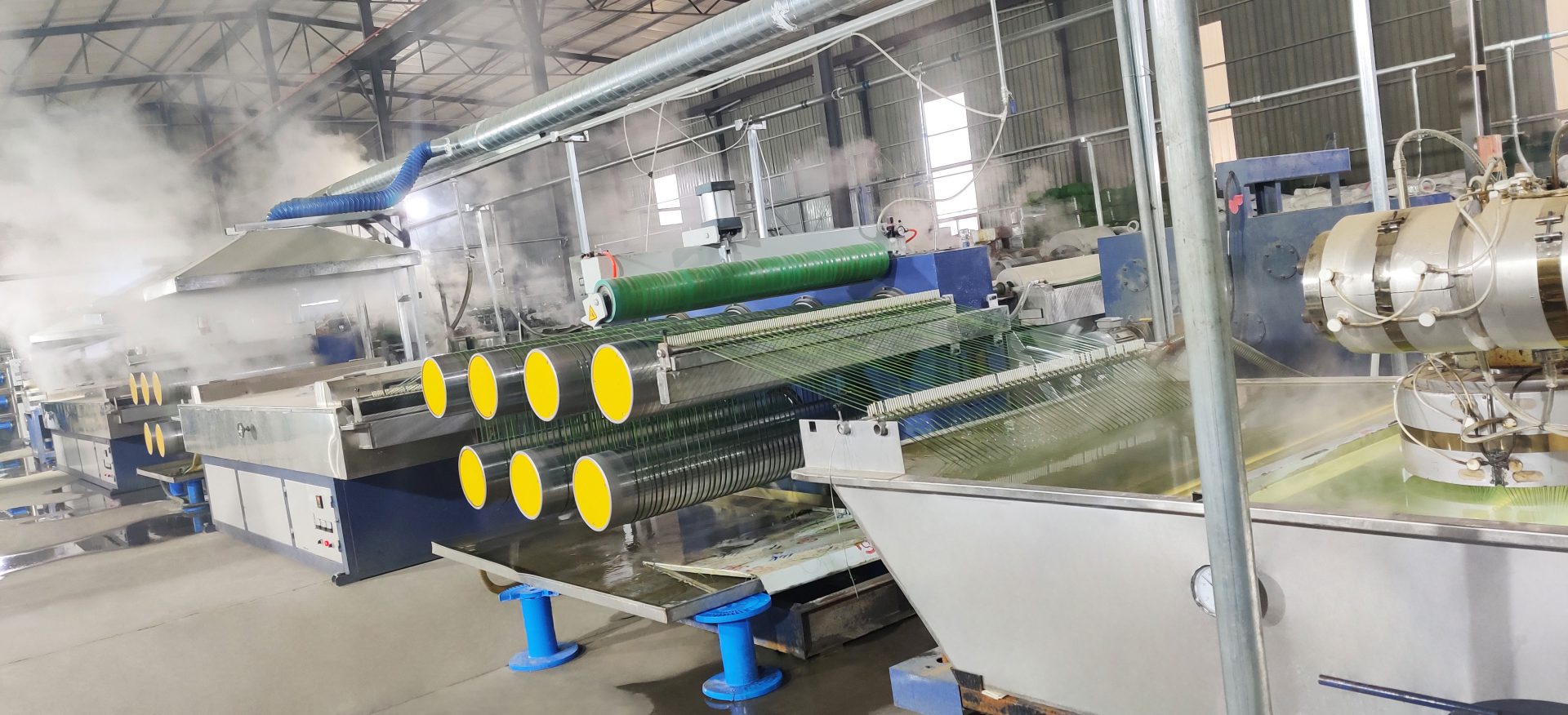
In recent years, artificial living walls have gained popularity as a design solution for both indoor and outdoor spaces. These vertical gardens, created from synthetic plants, provide the aesthetic and environmental benefits of natural greenery without the maintenance challenges. Whether you’re decorating an office, enhancing your home, or designing a large commercial project, artificial living walls offer an innovative and versatile option for creating beautiful green spaces.
What is an Artificial Living Wall?
An artificial living wall is a vertical installation made from synthetic plants and greenery. Unlike natural living walls, which require soil, water, and sunlight, artificial living walls are designed to mimic the look and feel of real plants without the need for maintenance. They are perfect for indoor environments with limited natural light or outdoor settings where plant care may be impractical.
Benefits of Artificial Living Walls
- Low Maintenance
One of the biggest advantages of artificial living walls is that they are virtually maintenance-free. Unlike real plants, artificial plants don’t require watering, pruning, or sunlight, making them an ideal choice for busy professionals or spaces where upkeep is difficult. This makes them especially attractive for large commercial projects, where maintenance costs can quickly add up. - Eco-Friendly and Sustainable
While artificial plants may not be “alive,” they still provide a sustainable solution. By choosing synthetic greenery, you can reduce water consumption and avoid the need for fertilizers or pesticides, making artificial living walls an environmentally conscious choice. - Durability and Longevity
Artificial living walls are highly durable and can withstand various environmental conditions without wilting or fading. They are UV-resistant and weatherproof, which means they can be used in both indoor and outdoor applications without any risk of deterioration. - Design Flexibility
Artificial living walls can be tailored to suit any design vision. Whether you prefer lush tropical greenery or a minimalist, modern look, the possibilities are endless. They can be installed in homes, offices, shopping malls, restaurants, or even outdoor spaces, adding a touch of nature to any setting.
Applications of Artificial Living Walls
Artificial living walls are not only aesthetically pleasing but also functional. Here are some popular applications:
- Corporate Offices
Companies are increasingly using artificial living walls to create a calming and inviting atmosphere for employees and visitors. The greenery can boost employee morale, reduce stress, and promote creativity without the hassle of plant care. - Retail and Hospitality
In hotels, restaurants, and retail spaces, artificial living walls are used to create visually stunning focal points. They help to elevate the ambiance and create a more luxurious, eco-friendly environment. - Residential Spaces
Homeowners are using artificial living walls to bring a sense of nature indoors, especially in urban areas where outdoor space is limited. They are an ideal solution for lobbies, patios, balconies, or even interior feature walls.
Addressing Common Concerns
Despite their growing popularity, some people still hesitate when considering artificial living walls. Let’s address a few common concerns:
- Do They Look Fake?
Today’s artificial plants are designed to closely mimic the appearance of real foliage. With advances in manufacturing, it’s often difficult to distinguish artificial plants from their living counterparts. Premium-quality artificial walls use materials that replicate the texture and color variations found in real plants, making them a convincing alternative. - Are They Expensive?
While the upfront cost of an artificial living wall may be higher than natural plants, the long-term savings are significant. Without the need for water, soil, or ongoing maintenance, artificial living walls can reduce expenses over time, especially in commercial settings.
Installation and Maintenance
Another advantage of artificial living walls is how easy they are to install. Many systems are modular, meaning they can be customized to fit your space perfectly. Whether you’re installing a small feature wall in your home or covering an entire exterior building facade, artificial living walls can be adapted to fit your specific needs.
Once installed, artificial living walls require virtually no maintenance. You won’t need to worry about watering, sunlight, or plant diseases. Occasional dusting or light cleaning is all that’s needed to keep the wall looking vibrant and fresh.
Real vs. Artificial Living Walls: Which is Right for You?
When deciding between a real and artificial living wall, consider your specific needs and environment. A real living wall offers the benefits of natural plants, including air purification and a connection to nature, but it comes with high maintenance demands. Artificial living walls, on the other hand, provide a visually stunning, low-maintenance alternative that still brings a touch of nature into your space.
If your priority is low maintenance, durability, and design flexibility, an artificial living wall may be the best choice for you. Whether you’re working in a low-light environment, dealing with limited space, or looking to reduce upkeep costs, artificial greenery offers a practical and beautiful solution.
Conclusion
The growing demand for artificial living walls reflects a broader trend toward incorporating greenery into our built environments, while addressing the practical challenges of plant maintenance. Whether for aesthetic enhancement, environmental sustainability, or simply to create a calming atmosphere, artificial living walls are a smart, stylish, and eco-friendly solution for modern spaces.
With their versatility, ease of installation, and low upkeep, it’s no wonder that artificial living walls are quickly becoming a go-to option for designers and architects alike. From small homes to large corporate offices, these innovative walls offer the perfect balance of beauty and practicality.










